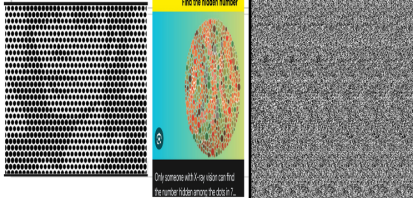# Understanding Chakras and Consciousness: A Scientific Perspective
Written on
Chapter 1: The Nature of Consciousness
You might assume that science is solely about concrete facts, yet that would overlook the complexities involved. Consciousness remains an elusive concept; it is recognized but not yet measurable in precise terms. Psychologists categorize consciousness into different states: unconscious, conscious, and superconscious—often referred to as Id, Ego, and Superego. These frameworks are theoretical constructs rather than physical structures found in the brain. This raises an intriguing question: how do these constructs compare to the concept of chakras?

In the Eastern philosophies, the notion of ego was quickly embraced, promoting the idea of ego transcendence. However, the ego plays a critical role as a mediator among opposing forces. Freud introduced this concept, which Jung further expanded upon, leading to various interpretations of its implications. In contrast, ideas surrounding auras, chakras, and energy systems like Chi are ancient and have been operationally effective, even if their consistency can be questioned. Our current understanding of consciousness is also far from consistent. Why, then, should we consider other subtle systems more reliable?
Section 1.1: Perception and Reality
Seeing goes beyond mere ocular function; it is predominantly a cerebral activity. Our perceptions are filtered through cultural lenses. For instance, Russians can identify a broader range of blue shades than many other cultures, highlighting how language shapes our visual experiences.
Interestingly, vision can be influenced by the physical attributes of our eyes. Color blindness stems from ocular issues rather than cerebral ones. It is well-known that multiple witnesses at an event can report differing accounts, which doesn’t negate the reality of the occurrence. The way individuals perceive the world can vary significantly based on whether they are more left-brained or right-brained.

As a counselor, I often engage both hemispheres of my brain, recognizing patterns and drawing holistic conclusions that contribute to therapeutic insights. When a client expresses surprise at a new perspective, it highlights that those entrenched in their experiences may not see the broader picture. Sometimes, it’s essential to step back and walk alongside someone, as those who draw the map may not fully grasp the nuances of the journey.

Section 1.2: The Illusion of Perception
Consider this: do you perceive a woman in the first image? What if I told you it’s an optical illusion? The same applies to the hidden numbers and shapes in seemingly static images. Once you learn to identify them, they become permanently visible. Some individuals possess heightened sensitivity to energy; this isn’t an exaggeration. Those with past traumas often excel at reading emotional cues, although this sensitivity can lead to isolation from supportive individuals.
Our understanding of biology is similarly flawed; while we may think we have mapped cellular structures, microscopy often relies on dyes to reveal different components. We’ve historically studied dead organisms to infer the nature of living ones, but advancements in technology, such as AI-assisted fMRI imaging, are uncovering previously unknown structures within living cells.
Chapter 2: The Essence of Energy and Intuition
Consider the realms of intuition and psychic abilities. Participants in military programs such as Stargate were often those perceived as exceptionally lucky. This intuition, whether labeled as luck or instinct, is honed through experience. However, many people today lack the exposure to nature necessary for developing these skills, as most of our interactions with the environment are limited to controlled settings rather than truly wild landscapes.
Our abilities are shaped by our beliefs, willingness to explore, and openness to new experiences. Few individuals are genuinely attuned to the subtle energies that could enhance these skills. Interestingly, many practitioners in fields like Reiki and energy healing contend that their abilities are innate and not easily learned.
The origins of acupuncture provide a fascinating example. Legend has it that a soldier, after being shot, found relief from other pains, leading to the development of this ancient practice. This raises questions: if you believe in acupuncture and have body piercings, are you impacting your energy flow? Does the pain from a tattoo alter your energy dynamics?
It’s essential to recognize that some pain may be psychosomatic, influenced by the mind rather than physical ailments. Hypnosis has been shown to manage pain effectively, even during surgery. The complexity of pain perception is evident; MRIs can display anomalies without correlating to actual pain experiences.
Chi, as an energy field, can be manipulated by some individuals. While charlatans exist in every field, genuine practitioners can evoke profound changes. Some therapists possess an innate quality that seems almost magical, transcending mere technique or knowledge. Their presence can lift moods, reflecting the power of human connection.
In conclusion, our perception of reality is often limited and influenced by myriad factors. The narratives we hear and share provide only snapshots of the larger picture. To truly understand the unseen energies at play, we need multiple interactions and experiences.
There is substantial evidence supporting phenomena such as Near Death Experiences and energy healing, perhaps even more than the established psychological constructs like the Id, Ego, and Superego. While many are familiar with the latter, true understanding often lies with those who explore the depths of human consciousness—much like a priesthood.
If we must adhere to a triad of understanding, let’s consider a continuum where most human experiences exist between light and darkness, or the superconscious and shadow states. Although some aspects have been charted, our comprehension of the human psyche remains less developed than our knowledge of the cosmos. Embracing beliefs in the unseen can open new avenues of understanding.